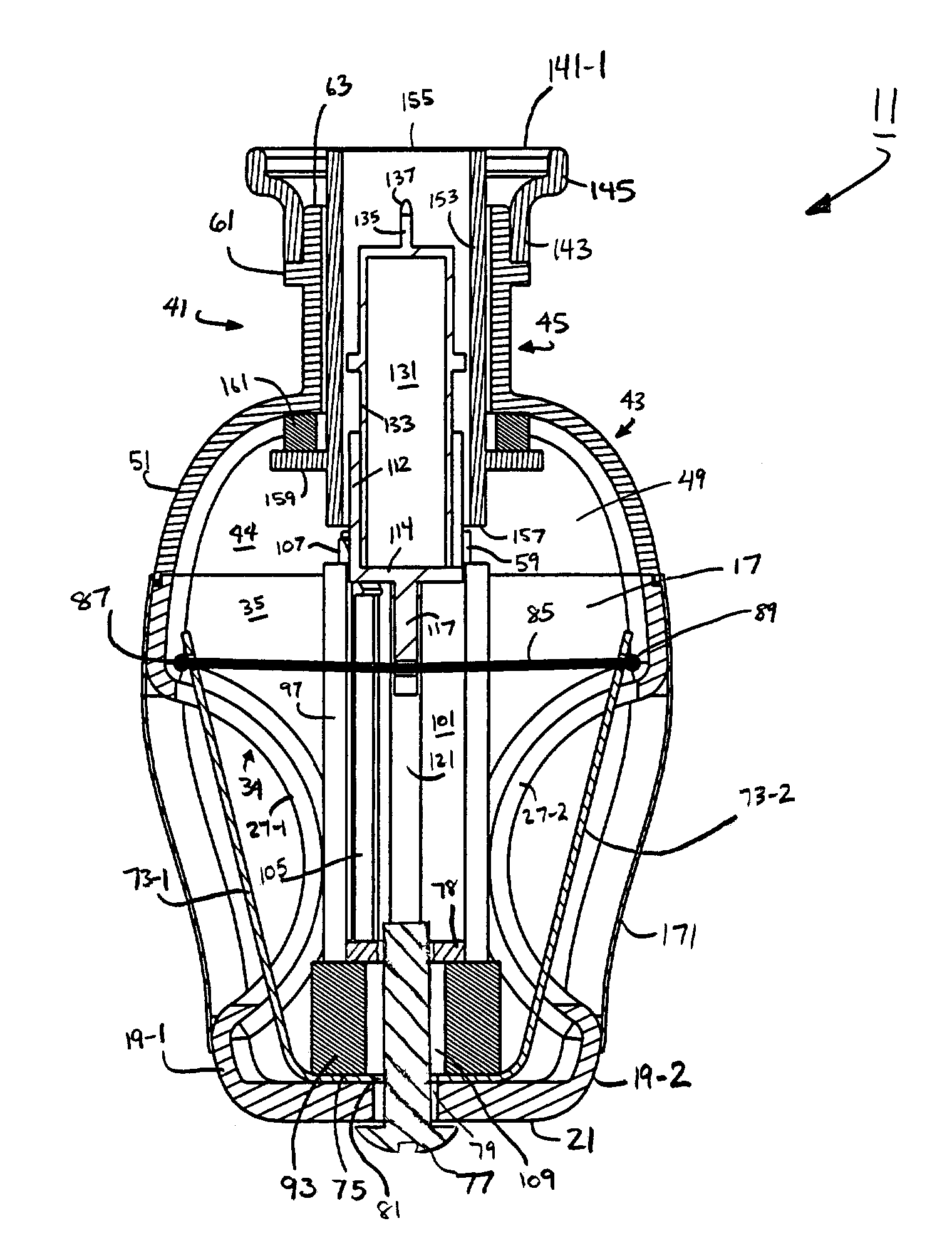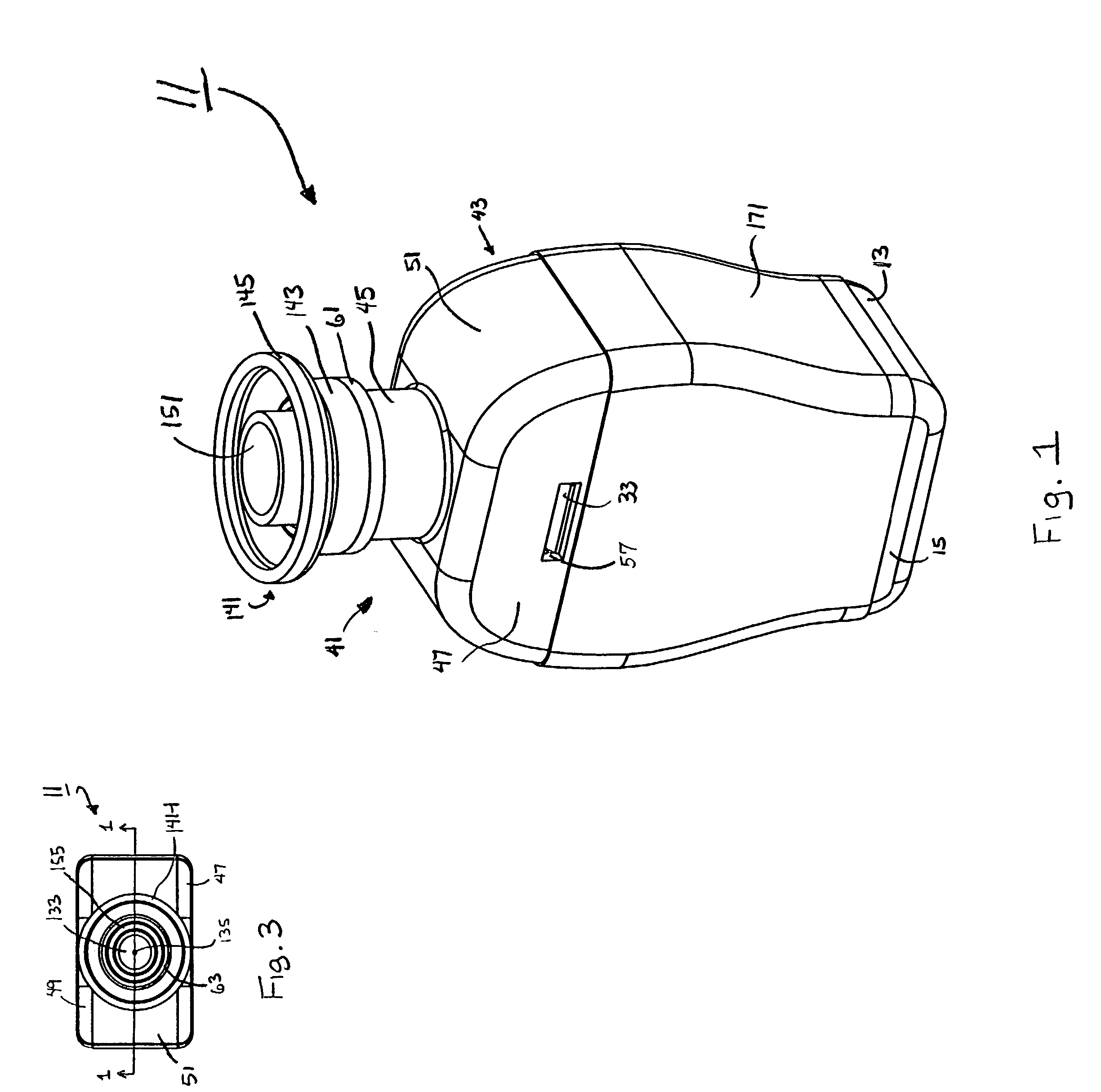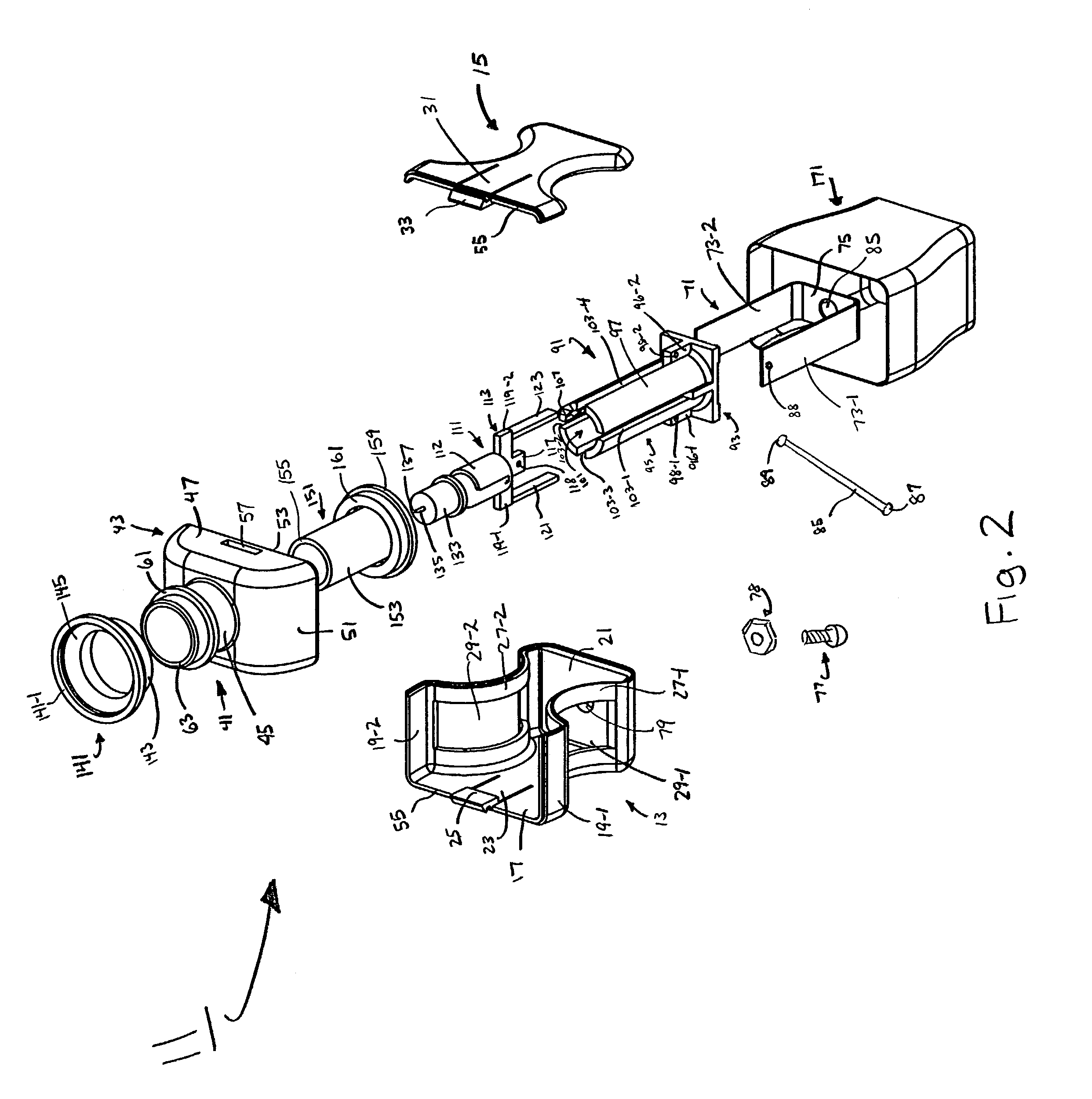Lancet device
- Summary
- Abstract
- Description
- Claims
- Application Information
AI Technical Summary
Benefits of technology
Problems solved by technology
Method used
Image
Examples
Embodiment Construction
[0036]Referring now to FIGS. 1 through 5, there are shown various views of one embodiment of a lancet device constructed according to the teachings of the present invention, said lancet device being shown in an uncocked state and being represented generally by reference numeral 11.
[0037]Device 11 includes a rear base portion 13 and a front base portion 15. Rear base portion 13, which is also shown separately in FIG. 6, is a unitary structure, preferably made of a durable molded plastic or similarly suitable material, and comprises a rear wall 17, a pair of side walls 19-1 and 19-2, a bottom wall 21, an open front and an open top. Rear wall 17 is shaped to include an upwardly extending tab 23, tab 23 terminating at its top end in a rearwardly facing pawl 25. For reasons to become apparent below, tab 23 is adapted to be resiliently flexed forwardly.
[0038]A scalloped portion 27-1 is provided in side wall 19-1, and a corresponding scalloped portion 27-2 is provided in side wall 19-2. As...
PUM
 Login to View More
Login to View More Abstract
Description
Claims
Application Information
 Login to View More
Login to View More - R&D
- Intellectual Property
- Life Sciences
- Materials
- Tech Scout
- Unparalleled Data Quality
- Higher Quality Content
- 60% Fewer Hallucinations
Browse by: Latest US Patents, China's latest patents, Technical Efficacy Thesaurus, Application Domain, Technology Topic, Popular Technical Reports.
© 2025 PatSnap. All rights reserved.Legal|Privacy policy|Modern Slavery Act Transparency Statement|Sitemap|About US| Contact US: help@patsnap.com



